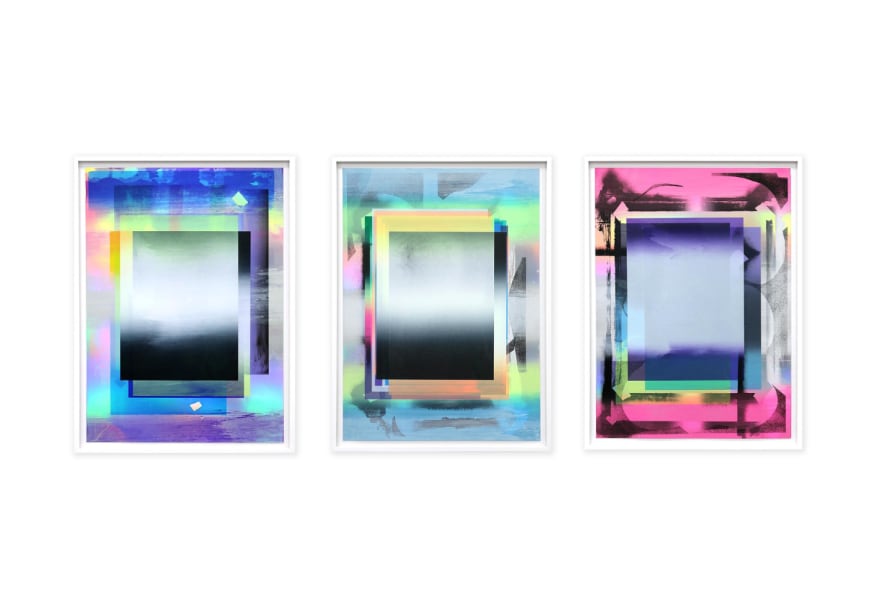20 december 2024, Flor Linckens
The innovative screen prints of Vincent Uilenbroek
Until 18 January 2025, galerie dudokdegroot in Amsterdam presents 'Specter', an exhibition by Vincent Uilenbroek. This Dutch artist is renowned for his technical expertise and innovative approach to screen printing. Uilenbroek’s practice is defined by his experiments with techniques, colours and materials, including wood and perspex, constantly pushing the boundaries of the medium. As a result, his works often resemble painting more closely than traditional graphic art.
Uilenbroek has a particular fascination with the creative process and the residues it leaves behind. While screen printing is typically associated with reproducibility, Uilenbroek transforms the technique into a tool for creating unique artworks. For this exhibition at galerie dudokdegroot, he presents seven new works in which holographic paper takes centre stage.
Uilenbroek’s practice operates at the intersection of minimalist abstraction, installation art and conceptual art. The artist frequently incorporates traces from his studio into his works: stencils, painter’s tape and residual forms — usually regarded as by-products — play a central role in his abstract visual language. By placing these materials in a new context, Uilenbroek challenges underlying hierarchies and subverts the values we consciously or unconsciously assign to certain materials.
Uilenbroek is particularly captivated by the threshold between the creative process and the final result. He often deviates from standard printing techniques. For instance, where the edges of a screen are usually taped to prevent leakage, Uilenbroek sometimes tapes off the central part of the work instead. He also uses Photoshop to analyse and deconstruct images into multiple layers. In his earlier "Unfold" series, he carried a printed base in his pocket for a time to create a worn, folded grid, which then served as the foundation for new layers of colour.
For the Specter series, currently on view, Uilenbroek harnesses the unique properties of holographic paper. This material captures light and, depending on the viewer’s angle, reveals shifting colours and forms. As a result, the works take on a fluid, dynamic quality, appearing to move before the viewer’s eyes. “These works,” Uilenbroek explains, “stem from my interest in the afterimage within the creative process. The interplay of colour blending, planes, layering, frames and transitions is combined with the properties of holographic paper. This paper enables the colours to manifest differently from various perspectives, giving the works a sense of motion. The frames within the compositions reference the traces from the studio — residual forms that would normally remain unseen. This creates an interaction between the work itself and what takes place beyond its edges.”
Vincent Uilenbroek was born in 1980 in Haarlem, where he works from his studio in the historic Magdalenaklooster. Read an interview with the artist, conducted in his studio by Wouter van den Eijkel, here. Uilenbroek studied at the Gerrit Rietveld Academie, the Royal Academy of Art in The Hague and Kunsthochschule Berlin Weissensee. His works have been included in several collections, including the Teylers Museum, CODA Museum, KPMG, the Ministry of Foreign Affairs, the AkzoNobel Art Foundation and UMC Utrecht.


